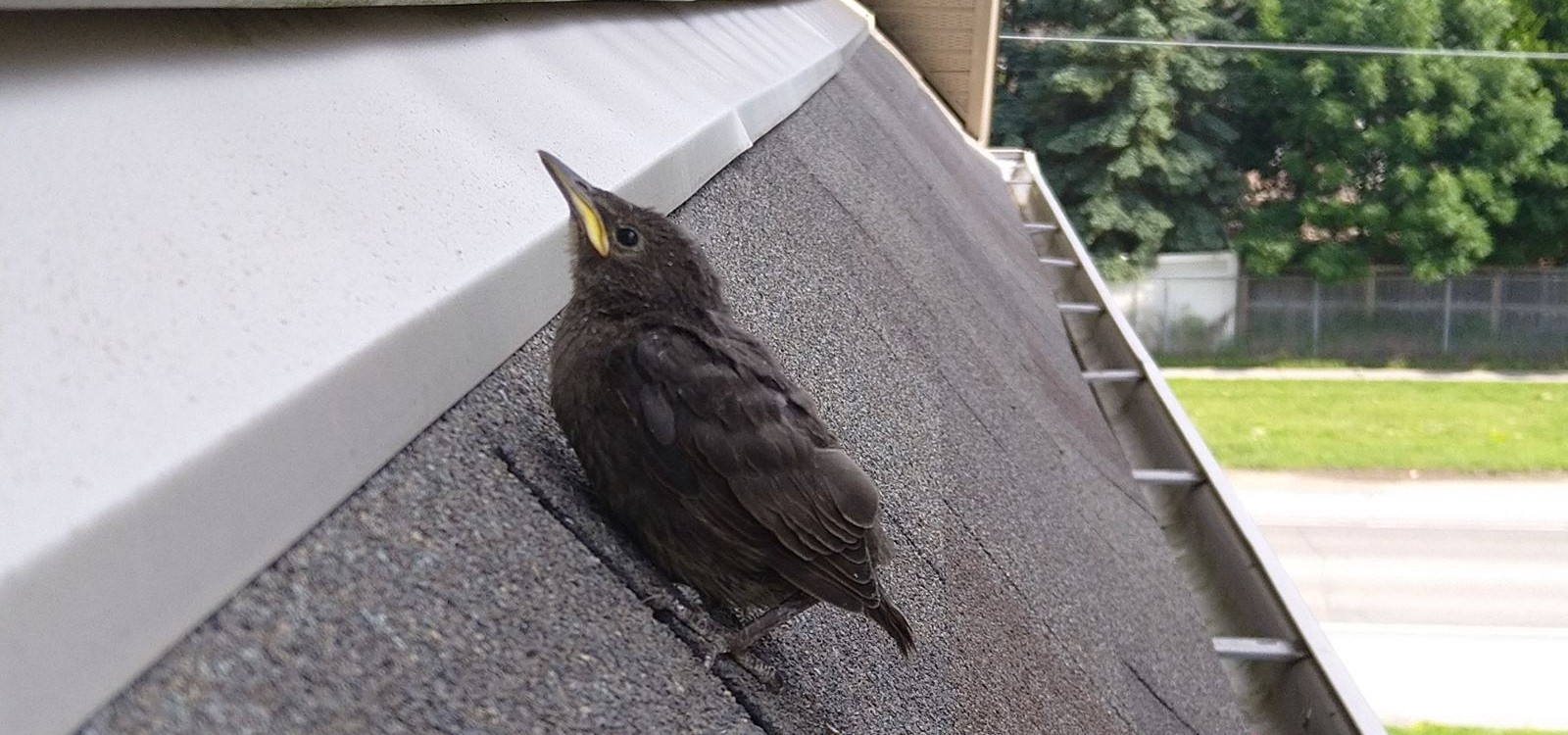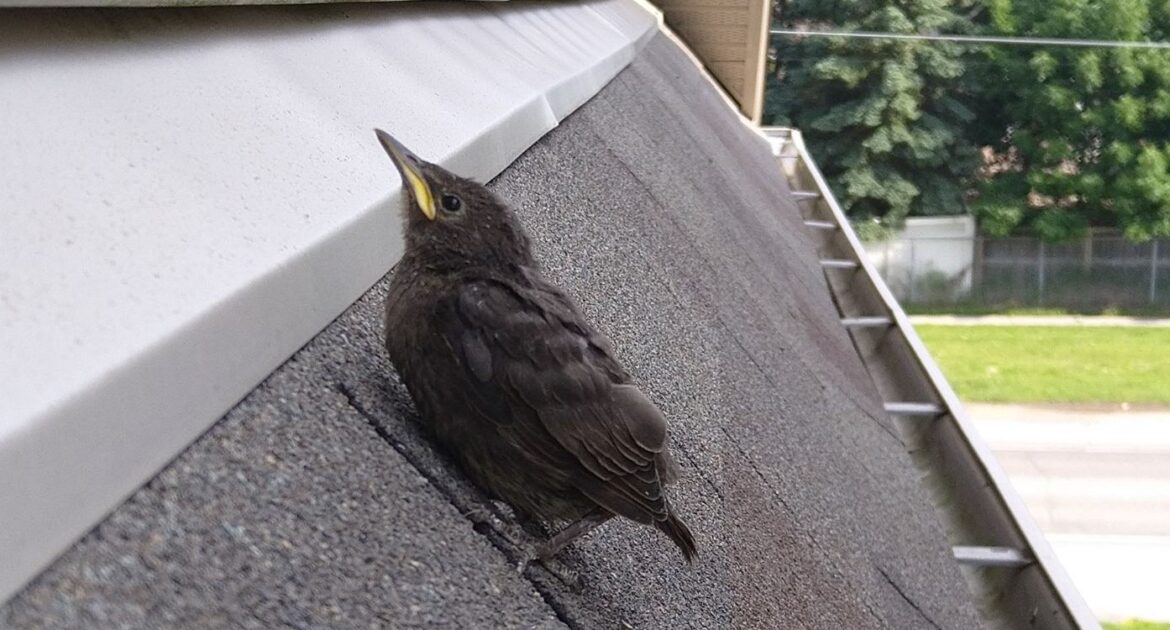When the skies darken and the winds pick up in Mississauga, it’s not just humans scrambling to find shelter. Birds, too, are remarkably good at protecting themselves during severe summer storms. But what exactly do birds in summer storms do to stay safe? Where do they go when the rain and wind take over? Understanding bird shelter in storms not only helps us appreciate their resilience but can also reveal ways we can support and coexist with them during challenging weather.
Birds use a variety of clever tactics to survive these storms. Knowing their habits and understanding where birds hide in rain can even help us see how they interact with the urban environment around us. At Skedaddle Humane Wildlife Control in Mississauga, we care about helping both homeowners and wildlife, ensuring we all live in harmony.
Let’s take a closer look at how birds seek protection and the role we play in ensuring their survival during stormy weather.
How Do Birds Sense Storms Coming?
Birds have an uncanny ability to detect changes in the environment. They can sense shifts in barometric pressure, temperature drops, and changes in wind direction long before a storm becomes visible to us. This early warning system gives them time to seek a safe bird shelter in storms.
Some birds may delay their regular feeding schedules or migrate to a safer area if the weather ahead looks especially dangerous. It’s not uncommon to see increased activity just before a summer storm, as they bulk up on food to sustain themselves through potentially harsh conditions.
Where Do Birds Hide in Rain and Storms?
When storms hit, birds instinctively seek out places that offer both protection from the elements and safety from predators. Bird shelter in storms can take many forms depending on the type of bird and the landscape they inhabit. Here are some common shelters during summer storms:
Dense Trees and Shrubs
Dense trees and shrubs offer excellent protection during storms. Their thick leaves and branches act as natural shields, keeping rain and wind at bay. Birds often perch close to the trunks of trees, where they find added stability and safety. Evergreen trees, with their tightly packed needles, are particularly helpful because they provide year-round shelter even in the heaviest rainfall.
Hollow Trees and Cavities
Hollow trees and cavities are another safe place for birds to hide. Natural holes in trees can protect them from rain and strong winds. Larger birds, like woodpeckers, often use these spaces, while smaller ones, such as chickadees, may gather in groups inside a cavity. Sharing the space not only keeps them safe but also helps them stay warm during bad weather.
Man-Made Structures
Man-made structures can also serve as safe hideaways for birds. Eaves, sheds, and overhangs on buildings provide quick and convenient shelter when a storm suddenly appears. Urban birds may also find protection under bridges, in culverts, or even inside backyard birdhouses.
Tall Grass and Ground Cover
For ground-nesting birds, tall grass and dense ground cover are key to staying safe. These birds hide among the grasses, flattening themselves against the ground to avoid wind and rain. Staying low also helps them remain out of sight from predators.
Rocky Outcrops and Crevices
Birds in more rugged areas might seek shelter in rocky outcrops and small crevices. These natural formations act as barriers against strong winds and provide dry spaces to ride out the storm. Coastal varieties, in particular, take advantage of these solid, protective spots.
How Do Birds Stay Safe During High Winds?
Staying put can be risky when the winds pick up. Birds have developed incredible techniques to hang on and ride out the storm. Here’s how they do it:
- Tight Perching Grip: Tight perching grip is one of the remarkable adaptations of birds. Their feet are built in a way that allows them to lock onto branches or other surfaces without using much energy. Once they grip onto something, they don’t have to keep tensing their muscles, which helps them stay secure even during strong winds.
- Cowering for Aerodynamics: Cowering for aerodynamics is another smart move birds use to stay safe. When they crouch low, they make their bodies smaller, so less of them is exposed to the wind. This position not only keeps them grounded but also helps them conserve energy as they wait for the storm to pass.
- Using Natural Barriers: Using natural barriers is a clever way birds protect themselves from harsh weather. By moving to the leeward side of trees, rocks, or buildings, they put a solid object between them and the strong gusts. It’s like finding a little pocket of calm air in the middle of a storm, keeping them safe and less stressed.
What Can You Do to Support Local Birds in Mississauga?
With severe storms becoming more frequent, there are ways homeowners can help birds in their quest for shelter. Here’s how you can make your property a safe haven for birds in summer storms:
- Install Birdhouses: Provide sheltered spaces for birds to retreat during storms. Position birdhouses in shady or shielded locations to maximize their effectiveness.
- Plant Native Trees and Shrubs: Adding dense vegetation to your outdoor space gives birds natural options for protection. Varieties of pine, cedar, and yew are great choices for year-round shelter.
- Set Up a Hedge Row or Wind Block: Shrubs or fences that break up the wind can create a restful spot for birds to wait out the storm safely.
- Avoid Disturbing Bird Shelters: During stormy days, avoid pruning shrubs or disturbing places where birds may take refuge.
By creating bird-friendly outdoor spaces, you contribute directly to their safety during harsh weather. Plus, it’s a great way to attract them year-round while supporting biodiversity in the area.
What Happens After the Storm?
Once the storm has passed, birds can often be seen emerging to survey the landscape, feed, and possibly repair nests. The aftermath of a storm can be challenging for birds, as habitats may be damaged, and food sources like insects could be temporarily scarce. This is another reason to maintain bird-friendly backyards. Offer fresh water in feeders, as puddles left behind by storms may contain harmful substances like pollutants or oil runoff.
Why Professional Wildlife Control Matters
While birds are experts at weathering storms, they sometimes end up seeking shelter a little too close for comfort. If birds have taken up residence in your home, it’s important to address the issue responsibly. At Skedaddle Humane Wildlife Control in Mississauga, we believe that removing birds doesn’t mean harming them.
Our team uses one-way doors that allow birds to leave safely but prevent them from returning. This ensures that you can reclaim your space without endangering the animals. Unlike DIY methods, our approach guarantees results and prevents repeat issues. Handling bird removal improperly can be harmful to both the birds and your property, so it’s always best to trust professionals like us to handle the situation with care.
Protect Your Home and Local Birds Today
Birds are incredibly resourceful when it comes to seeking shelter during summer storms, but sometimes they need a helping hand. If you’re dealing with birds that have turned your property into their shelter, Skedaddle Humane Wildlife Control in Mississauga is here to help. With safe and effective solutions like our one-way doors, we can help you protect both your home and the birds.
Need assistance when you find birds in summer storms? Contact our team for an estimate today and take the first step towards a humane, stress-free solution!




